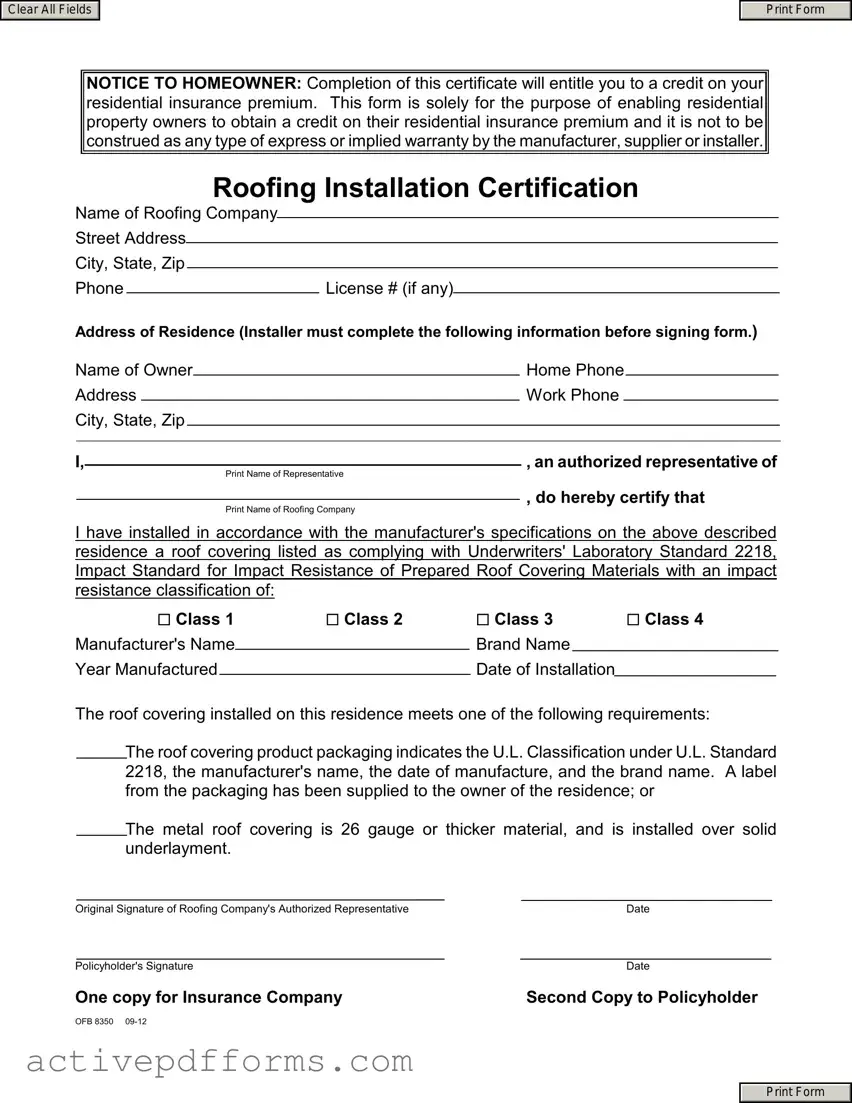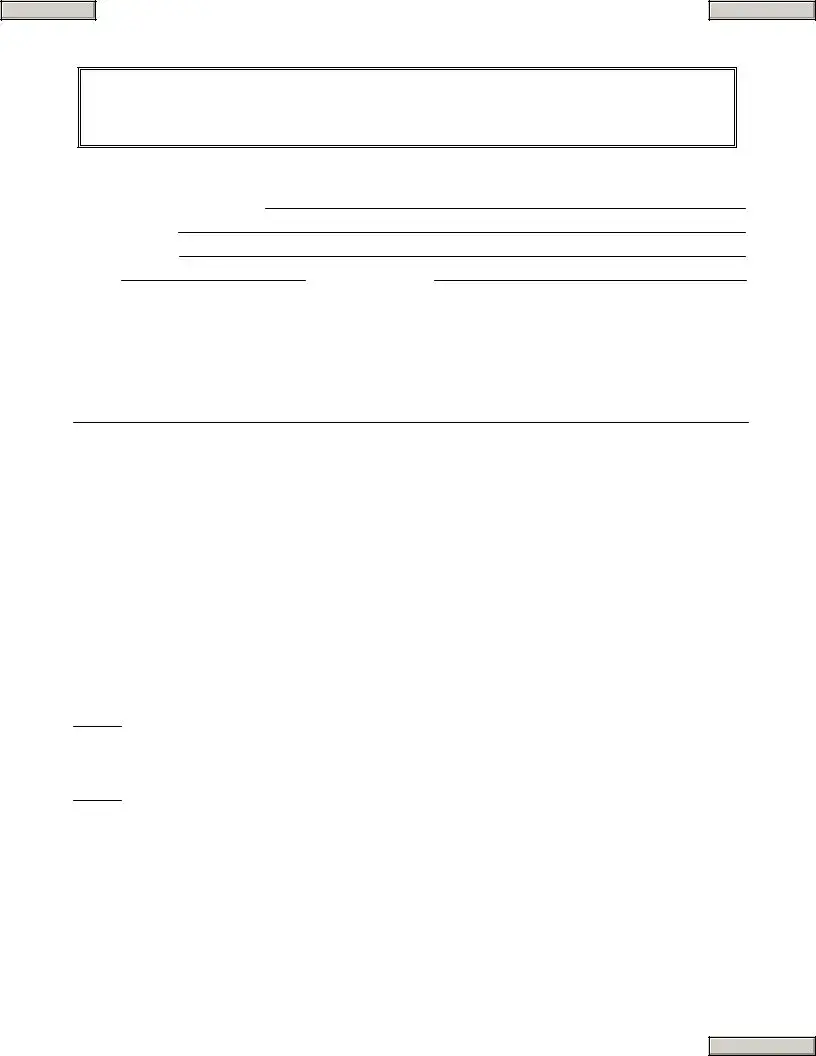In the realm of homeownership and property maintenance, the integrity of a home's roof plays a pivotal role in not only safeguarding the domicile from the elements but also in potentially reducing insurance premiums. The Roofing Installation Certification form serves as a critical document in this context, designed to facilitate a financial reprieve for residential property owners. By certifying that the roof installation complies with specific industry standards, particularly the underwriters' Laboratory Standard 2218 for impact resistance, homeowners are entitled to a credit on their residential insurance premium. This form, replete with details about the roofing company, the roofing materials used, and the exact specifications of the installation, is not just a technical affirmation of quality and compliance. It also carries an implicit assurance from the installers, albeit without extending into the realm of explicit or implied warranties. This succinct document encapsulates critical information including the roofing company's credentials, specifics of the roofing material like the manufacturer, brand, year of manufacture, and the class of impact resistance. Additionally, it outlines the procedural aspects such as the requirement for the installer to complete specific sections before signing, thereby underscoring the form’s role in providing homeowners and insurance companies with a verified testament of the roofing work undertaken. Indeed, the Roofing Installation Certification form epitomizes a vital interface between roofing contractors, homeowners, and insurance entities, striving to ensure transparency and accountability in roofing installations while concurrently enabling financial benefits for homeowners.

